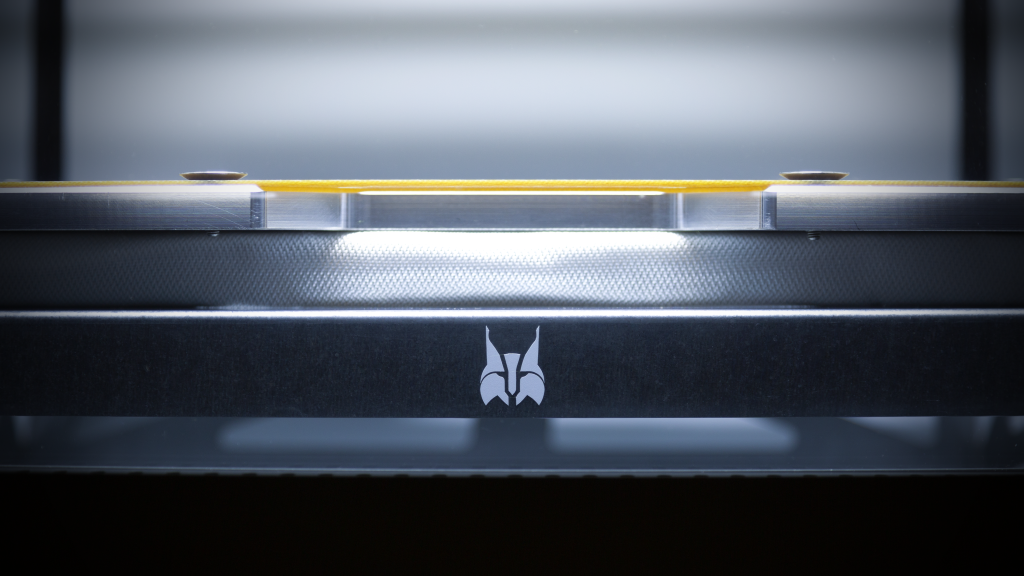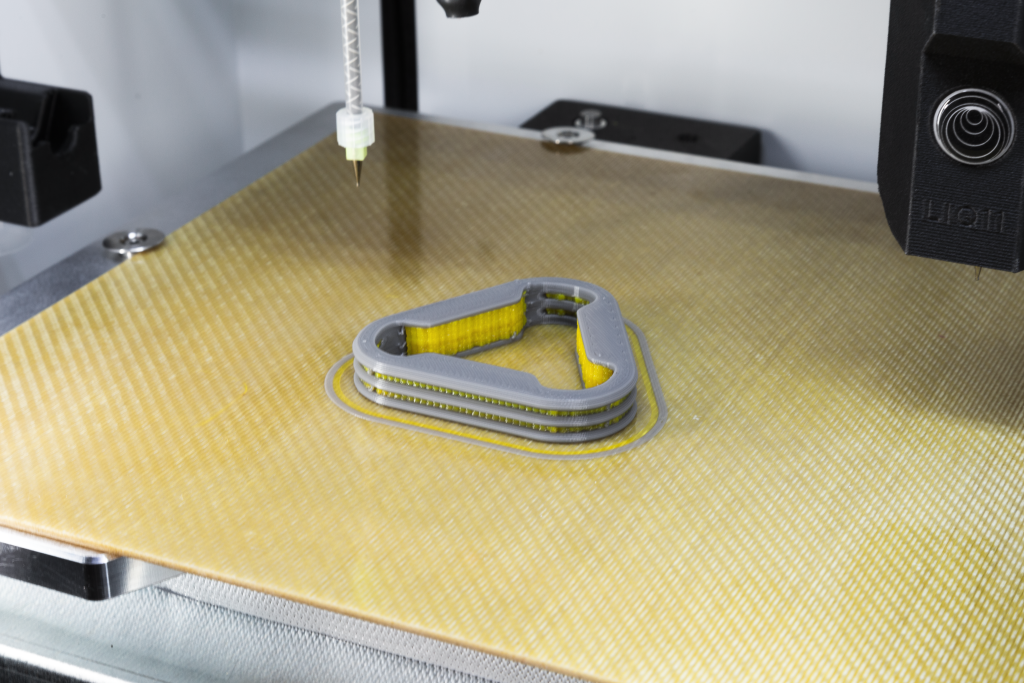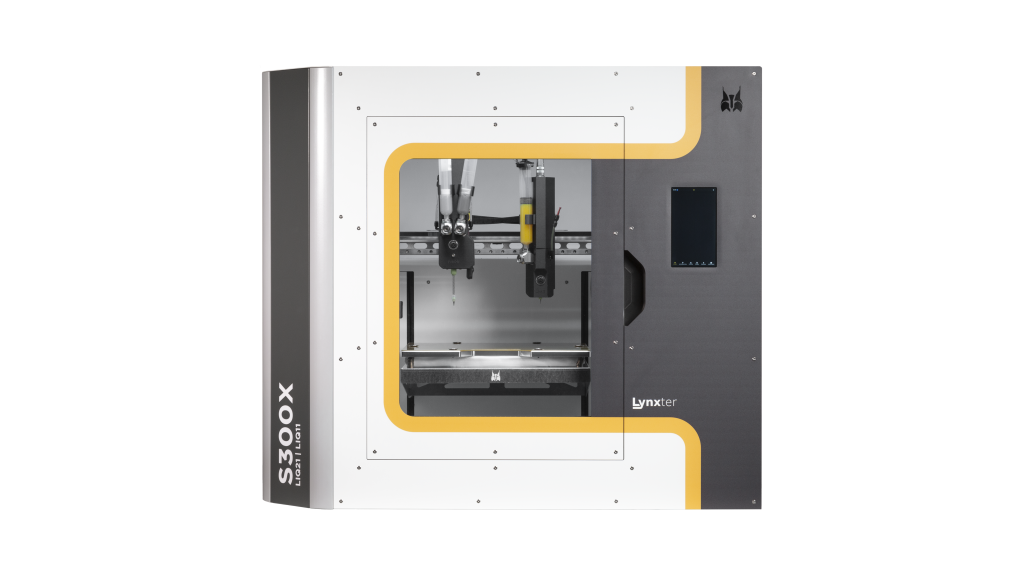French 3D printer manufacturer Lynxter has announced the launch of a new material extrusion (MEX/FFF) system, the Lynxter S300X.
Building on the expertise accrued in the development of the Lynxter S600D, the firm’s latest machine is designed to enable the reliable 3D printing of custom masking parts. Thanks to its open philosophy, the unit’s able to process industrial and medical-grade silicones and polyurethanes, hence Lynxter says it’s ideal for creating dampers, seals, skin contact-ready orthoses, functionalized textiles and surface treatment masking devices.

Lynxter’s open-material portfolio
Based in Bayonne, Lynxter has spent the last six years expanding its MEX/FFF 3D printing offering, and it now operates in nine countries, across the medical, industrial and rapid prototyping markets. While the firm started out with a pilot project alongside Airbus, it has since launched a line of open-material S600D 3D printers, supporting these with ancillaries, in the form of different toolheads.
The S600D itself features a 390mm x 600mm build volume and broad toolhead compatibility, thus users are able to chop and change to suit their individual application. Lynxter’s FIL11 single-extrusion toolhead, for instance, allows for the deposition of materials like PP, PEKK, PETG and PA6 carbon fiber, while the dual-extrusion LIQ21 can process certain RTV2 liquid silicones, and the PAS11 is clay and porcelain-compatible.
In addition to being modular, the machine also facilitates rapid toolhead changing with its quick connectors for electrical wiring and liquid cooling. This allows users to switch nozzles in a matter of minutes, and provides them with the flexibility to change from printing with liquid, thermoplastic or paste-based filaments, whenever the need should arise.

The new S300X IDEX 3D printer
Designed to address companies’ end-production needs, the S300X is fitted with a LIQ11 single-part toolhead, and two-component LIQ21 toolhead. This independent dual extruder (IDEX) setup enables users to create complex parts with soluble supports. The S300X also allows for the production of unique multi-material parts, which combine differing physical properties across a single print.
Alongside its new machine, Lynxter has also launched ‘HUB,’ an online platform built from the ground up to help users save time and work more efficiently. In practice, the site allows users to achieve this through the utilization of advanced print profiles, as well as access to features like an interactive product catalog, plus in-depth guides and tutorials.
According to Lynxter, the system is a “simplified, affordable and open” industrial tool that “prints at a high speed while maintaining a superior level of precision.” Given that the S300X is also compact and emits very little noise, while operating on high-capacity cartridges, it’s easy to integrate into workspaces too, and doesn’t require constant supervision.

Targeting silicone manufacturing
One of the main target markets for Lynxter’s S300X is the industrial and medical part production space. With this in mind, the firm sees the compatibility of its machine with materials like RTV2 silicones and polyurethanes as an important feather in its cap, due to their application in these areas, and the former’s ISO 10993-05 certification.
As an added benefit, RTV2 age-resistant silicones don’t require heavy post-processing either, and they have injection molding-level mechanical properties. Lynxter has also launched its own range of proprietary materials with the system, including an SIL001 silicone, which is said to provide users with “industrial-quality” results.
Ultimately, the company believes the S300X will “democratize printing with silicone,” by making it possible to rapidly produce custom devices without taking a manual impression or using a mold. In doing so, the machine allows for hollowing and the variation of infill rates to modify parts’ properties as well, whether that be to reduce hardness, add resistance and improve damping or change their anisotropy.

Technical specifications and pricing
Below are the technical specifications for the Lynxter S300X. The machine is now available to preorder, with customers able to request a quote for the Lynxter S300X directly via the company. Prospective adopters can get a closer look at the system when it breaks cover at Formnext from November 15-18, 2022, ahead of deliveries which start in 2023.
| Print Volume | 300 x 250 x 200 mm |
| Layer Height | 100 µm to >1mm |
| Calibration | Automatic |
| Nozzle Diameter | Ø0.23mm to Ø1.04mm |
| Printer Dimensions | 1000 (W) x 629 (L) x 887 (H) mm |
| Toolheads | Independent Double Extrusion |
| Supports | Dissolvable |
| Security | Closed Filtered Environment |
To stay up to date with the latest 3D printing news, don’t forget to subscribe to the 3D Printing Industry newsletter or follow us on Twitter or liking our page on Facebook.
While you’re here, why not subscribe to our Youtube channel? featuring discussion, debriefs, video shorts and webinar replays.
Are you looking for a job in the additive manufacturing industry? Visit 3D Printing Jobs for a selection of roles in the industry.
Featured image shows the Lynxter S300X 3D printer. Image via Lynxter.



